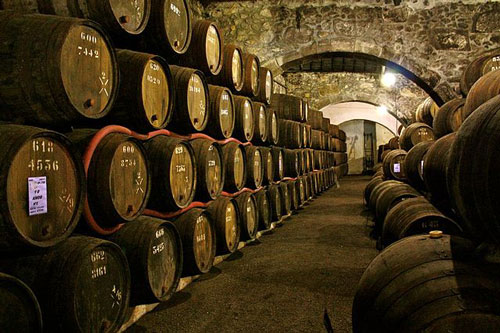Port wine, named for the ancient city of Porto where it has historically been created, is one of the world’s most renowned wines and probably the most famous of all fortified wines. All the grapes used in its production come from the Portuguese side of the mountainous River Douro Valley. In order to fortify it, brandy is added before the wine has completely fermented, adding sweetness and richness to the flavour and smoothing out the mouthfeel. As a result of its fortification, port wine ages differently in casks than in bottles and in general, the ageing process can proceed in a variety of ways, making port one of the world’s most dazzling wines.
Choosing Port
The wide variety of port styles makes choosing a bottle a fascinating adventure, but it can also be a bit daunting. The first major classification of port is based on how it has been aged: either in a bottle or in wood. There are three styles of wood-aged Port: Red, Tawny and White, and two styles of bottle-aged Port: Vintage and Crusted.
Wood-aged ports tend to be sweeter than bottle-aged ports, and are also far more common. Red Ports spend six years or less ageing in large oaken vats. The three kinds of red port are ruby, reserve and late bottled vintage, and each category is aged longer than the last. The longer they age in wood, the oakier and drier they tend to be. White Ports are also aged for a short time, between two and three years.

Tawny ports are aged anywhere from 10 to 40 years. The fruitiness of red Ports fades, while nutty and slightly spicy flavours come to dominate as a result of oxidation and prolonged contact with the wood barrel. The colour changes from the deep red of younger ports to a rich and mellow shade of amber.
Bottle-aged ports, as the name suggests, spend most of their time aging in a bottle rather than in wood barrels. After around two years aging in wood, these wines are bottled and aged further for years or even decades. Vintage Ports are made only from grapes grown in especially fine years, or ‘declared vintages’. They are the most complex ports around, and definitely worth going through the trouble of finding. Crusted ports are made the same way, but with less strictly chosen grapes.
Pairing with Port
Keep in mind that port’s flavour and aroma are extremely dominant, so it should be paired with equally strong-tasting food. Soft, pungent cheeses like Stilton and Camembert pair well with port and they are frequently seen together. Strongly cured meats also complement port wonderfully. Presunto, a Portuguese style of cured ham, is a traditional and perfectly suited match for port.
We hope this short guide helps, but the only way to really understand port wine is to drink it. Experiment with pairings, try different styles and vineyards, and get to know port wine intimately. It really is a delicious and fascinating wine.




